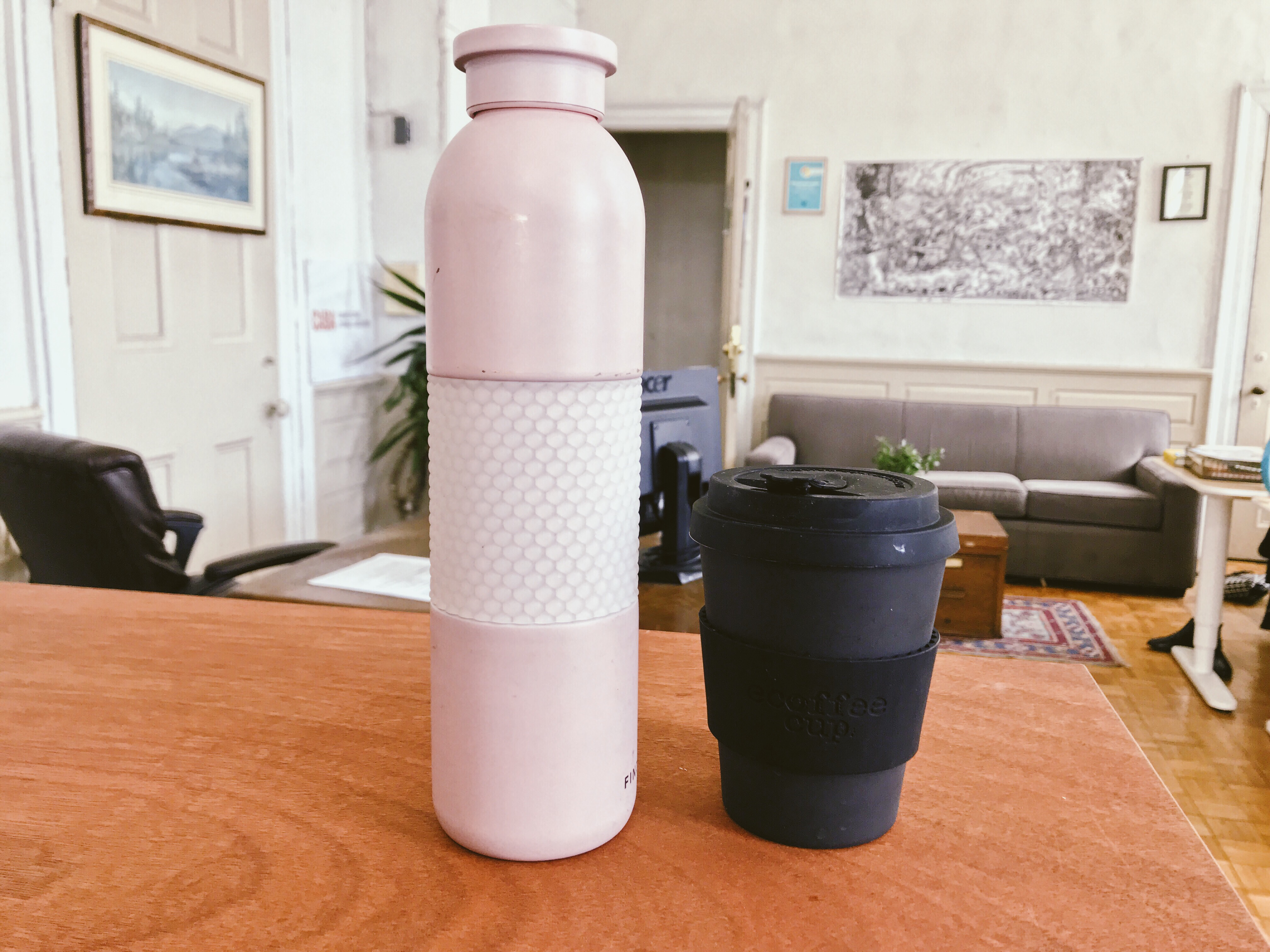‘Zero-waste’ has become synonymous with ‘sustainable’, gaining popularity as consumers increasingly gravitate towards products that leave less of an impact on the environment. But what does it mean to produce no waste and how can we all take part in moving the economy in this direction?
Waste, and more specifically plastic waste, is taking a massive toll on the planet. This can particularly be seen in the world’s oceans. A full 32% of the 78 million tons of plastic packaging produced annually is left to flow into our oceans––the equivalent of pouring one garbage truck of plastic into the ocean every minute. We have been exploring this issue here at CABA and even created a podcast episode focusing on how plastics are impacting the oceans and what we can do to help.
After our podcast recording, we started looking at the amount of disposable plastic we produce each week. , Therefore, in honor of Earth Day, CABA HQ has decided to take on the challenge of going zero-waste for one week, starting this Sunday!
First, remember that it’s not about being perfect, or about changing habits overnight. Rather, this is a simple exercise we can all do to truly understand the ways in which we, as consumers, are polluters as well. We a part of the problem, and therefore can be a part of the solution. If going zero waste is ‘too hard’ take a moment to reflect on how dependent we have become on quick and easy products and how urgently we need to change that.
We want to take you on this journey with us –– the struggles (which there will be many of) and the highlights of the week. So we created this simple guide of steps we can all take to reduce our personal waste and keep as much out of landfills as we can, so, here’s where to start:
-
Keep in mind your “why”
It is important to not only establish a goal, but to keep the reasons behind that goal front and center. In this case, we want to create less waste is to keep trash from littering our neighborhood and world-at-large, and also to lessen our carbon footprint. From the trash that litters our streets, to the massive amounts of plastic in our oceans, as consumers we must realize the ways in which our behaviour plays a part in the problem. Therefore this week, before you buy anything, think about where it will end up and when. Is the product you’re buying wrapped in plastic that you will use for a few minutes before throwing it in the trash? Is there a way to purchase that item without any unnecessary packaging?
-
Assess the problem
This one is a bit weird, but bear with me–– take a few minutes to look at your trash. In order to know where to start, it is helpful to see where most of your trash is coming from. Are there a lot of empty food containers from that takeout place you like so much or a bunch of empty cups from your favorite coffee place? Once you know what is responsible for most of your waste, you can start prioritizing where to start reducing it.

-
Start with the low-hanging fruit
Going zero-waste won’t happen overnight, the truth is that we are used to the convenience of the modern economy, where we can get almost anything we want anytime we want it, and it’s almost always wrapped in plastic or another form of single-use packaging. But there are some l changes we can all make right away, without changing much of our current routine.
The first is bringing your own reusable grocery bags to the store. Write a little post-it note on your door so you don’t forget them or put some in your car and keep them there! Another good tip is to forgo using the plastic bags for produce they have at stores –– since produce needs to be washed before you eat it, there is no need for the extra plastic.
On that note, get in the habit of carrying a reusable bag, ALWAYS! You never know when you will need to pick something up from the store last minute, and it’s good to have one handy. Another easy way to avoid unnecessary waste is to ask for no straw when you order a drink at a restaurant –– while most people don’t mind forgoing a straw, if you do like using one, you can think about investing in a reusable one made of stainless steel or glass!

-
Seek alternatives
When you have the option, an easy way to cut back on waste is by choosing alternative products that are not packaged; for example, don’t buy that plastic bag full of apples, instead get the individual ones. Same goes for unnecessary packaging of other produce. If there are things you must buy in packaging, like milk or yogurt, opt for the largest container you can find instead of single servings to avoid the extra packaging.
Eco-friendly brands are on the rise, which means as consumers we are getting alternatives to the products we love. Whether its beauty, feminine hygiene, or cleaning products, there is a movement towards locally produced, eco-friendly alternatives to consumer goods –– many times at a price that is comparable to its more wasteful counterpart. This is a great way of not only preventing waste, but supporting local and small businesses.

Our Director of Operations Amanda, prefers her soap not wrapped in plastic.
-
Invest in reusables
First things first –– buy a water bottle. Buying disposable plastic bottles of water in areas with safe drinking water can be an unnecessary expense. If you live in a place like Boston, where tap water is safe to drink, there are alternatives to purchasing disposable bottles. If you like filtered water, then you can think about investing in a water filter too!
The same goes for coffee cups –– if you love your coffee in the morning but don’t like making it at home, you can always invest in a reusable travel mug to bring to your favorite coffee spot. Many coffee shops are now offering small discounts for bringing your own cup, and even if they don’t, you can have the satisfaction of not throwing out single-use cups away every day. If you also love your take out, or eat out for lunch, get a reusable container that you can bring, and ask for “just the food” no need for the packaging.

Our Communications Director brings her bamboo coffee cup and water bottle every day!
-
If you can make it, don’t buy it
This is a great rule of thumb that will not only reduce your waste, but also help you save some $$$ and likely give you cleaner and healthier products. You can make anything from your own ––granola, trail mix, yogurt to your own toothpaste and cleaning products (it’s true, you can google it!)

Our Executive Director, Michael Green, makes breakfast at home every morning.









